Bone Bank Archaeological Research
Posey County, Indiana
Rescue Excavations at the Bone Bank Archaeological Site in Southwestern Indiana
 Introduction
Introduction
 Indiana's First Archaeological Excavation
Indiana's First Archaeological Excavation
 Survey and Testing
Survey and Testing
 Significance
Significance
 Project Goals
Project Goals
 Research Stages
Research Stages
 Expected Results
Expected Results
 Bone Bank in 2000
Bone Bank in 2000
 Planning for 2001
Planning for 2001
 Current Work
Current Work
 In the News
In the News
 Fall 2001 Lecture
Fall 2001 Lecture
 References
References
 Geomorphological History
Geomorphological History
 Links
Links

October 1 to 26, 2001 (Part 1)
The South Block 2 excavation was expanded northward, in Units 4Q to 4U. Excavators Brian Somers, Nicole Palmer, and Trish Word discuss record forms for L.9 with Staffan Peterson.

As the block excavation was expanded, we needed wider plastic to help protect the deposits from rain. (The "Need Help" boat cushion is a flotation device kept handy for safety, in case anyone fell in the river.)
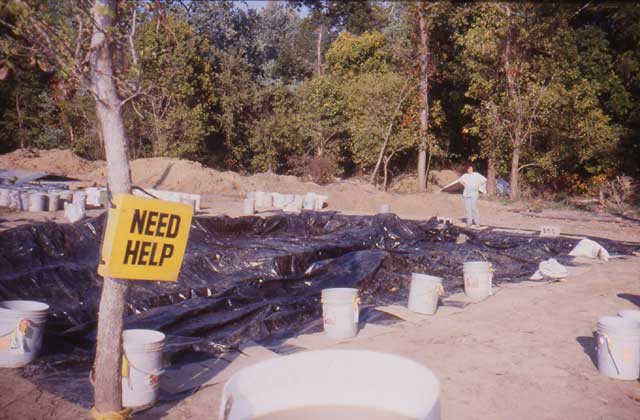
Fall 2001 was exceptionally rainy, and we became skilled at reversing the pump and draining the excavation block. An hour after starting the draining, we would be excavating again.
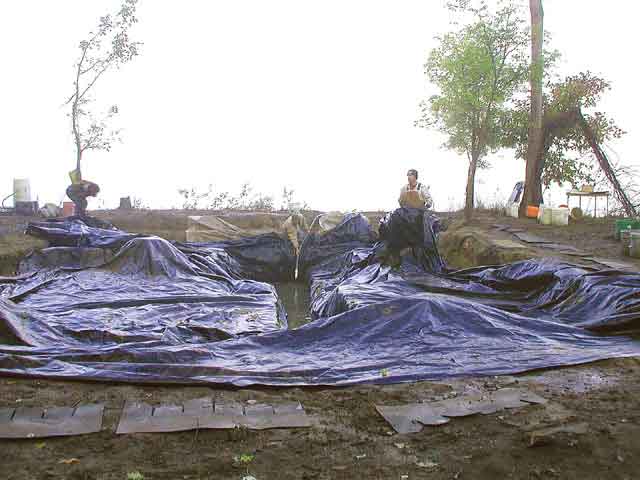
Having hoses handy for water-screening meant that we could use them to moisten the profiles for mapping.

After making a rough count of ceramics, another four excavation units were added, two on the north, two on the south. Excavation were not extended below L.9 due to sparse materials in L.10 and L.11. The deeper excavation in L.10-11 in the center of the block was covered over (with pallets, roofing shingles, and carpet pads). After rain, the water in the trench provided a good place to wash off our muddy boots, so we could keep the active work area relatively "clean."
(Good idea, Lauren!)

The last expansion included five units (5A to 5E) on the west side of the block. Our backs were literally against the river, and we had some cold days. The laser level (orange) helped greatly with the precision and efficiency of the excavation and is located in the southwest corner of the block.
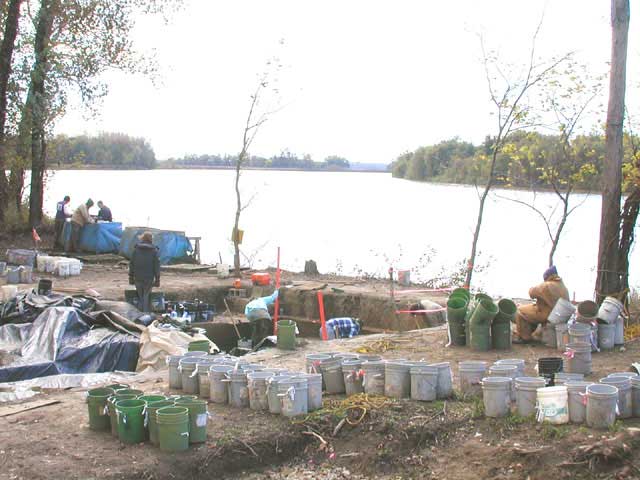
Final excavation plan, South Block 2.
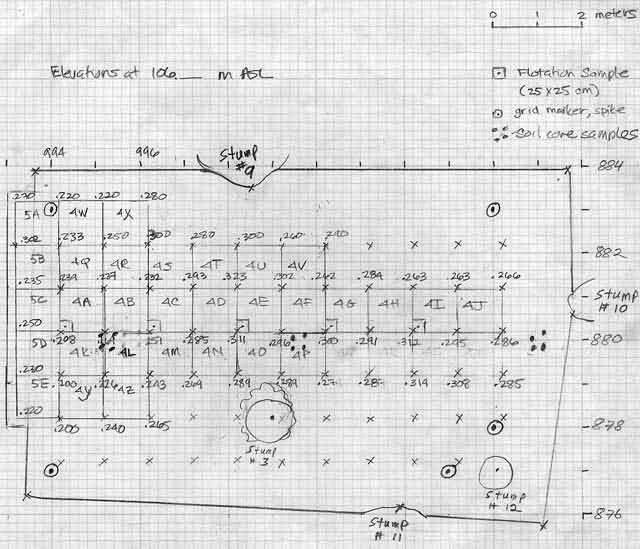
Profile of west wall, Units 5A-5E, South Block 2.
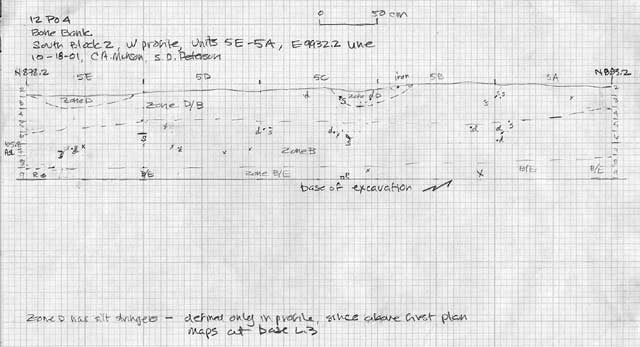
Previous Weeks
First Week (August 22-26, 2001)
Second Week (August 29 - September 2, 2001)
Third Week (September 5 - September 9, 2001)
Fourth Week (September 12 - September 16, 2001)
Fifth Week (September 19 - September 23, 2001)
Sixth Week (September 26 - September 30, 2001)
October (October 1 - October 26, 2001) Part 1
October (October 1 - October 26, 2001) Part 2
Thanks Everyone!
Current Week
Check in here soon to see more photos of the fall 2001 work in progress!
Return to Top
Last updated on 9/17/2001
Send Comments to: munsonc@indiana.edu
Site sponsored by Indiana
University
 Introduction
Introduction
 Indiana's First Archaeological Excavation
Indiana's First Archaeological Excavation
 Survey and Testing
Survey and Testing
 Significance
Significance
 Project Goals
Project Goals
 Research Stages
Research Stages
 Expected Results
Expected Results
 Bone Bank in 2000
Bone Bank in 2000
 Planning for 2001
Planning for 2001
 Current Work
Current Work
 In the News
In the News
 Fall 2001 Lecture
Fall 2001 Lecture
 References
References
 Geomorphological History
Geomorphological History
 Links
Links








